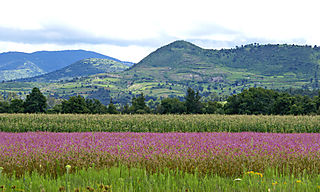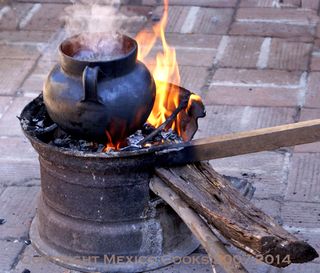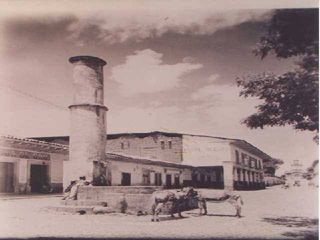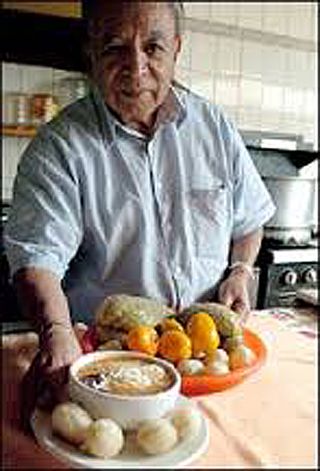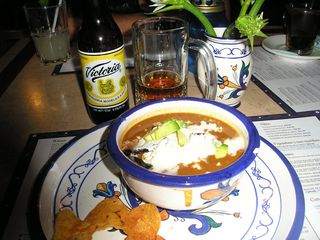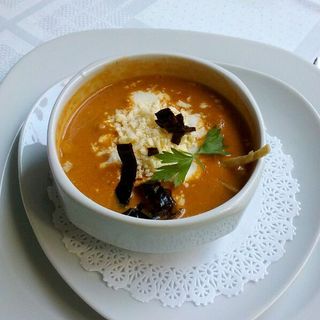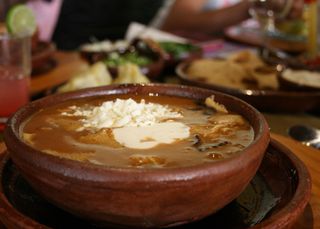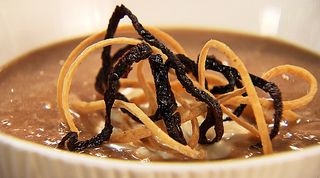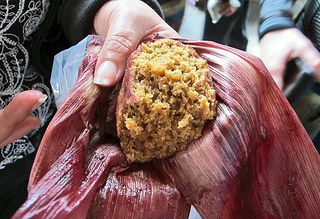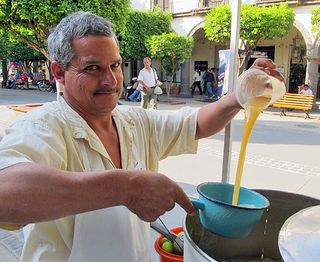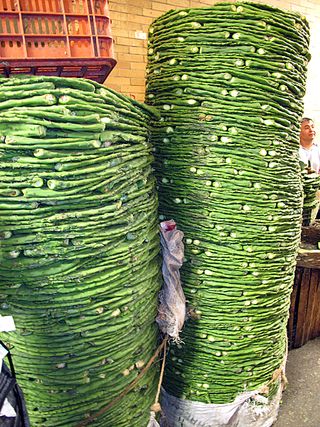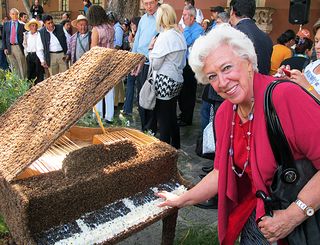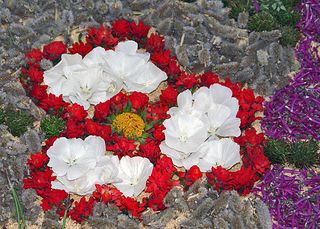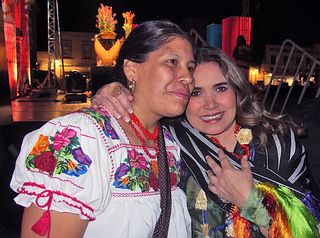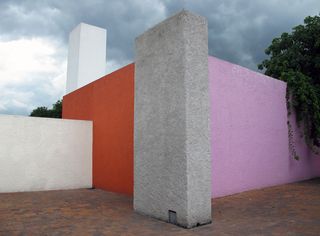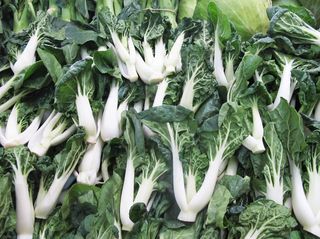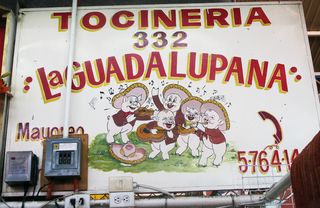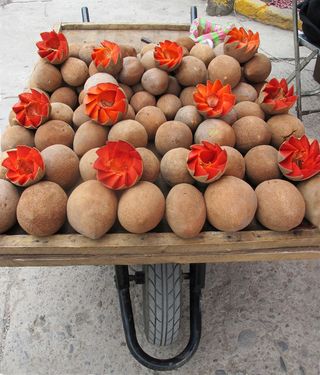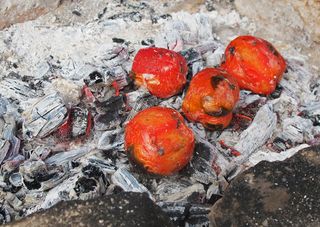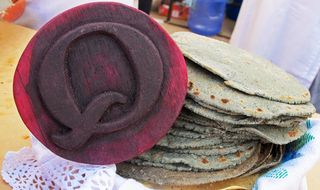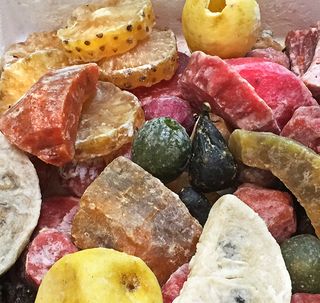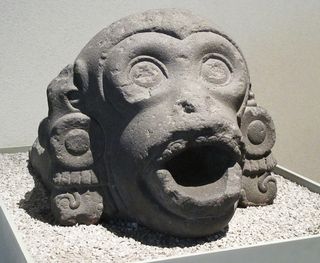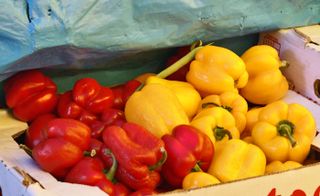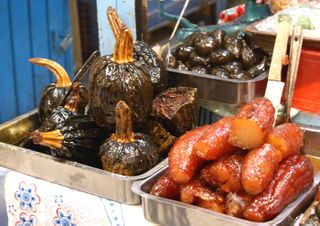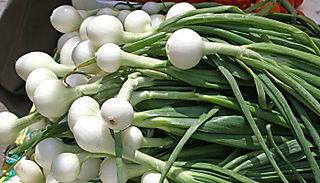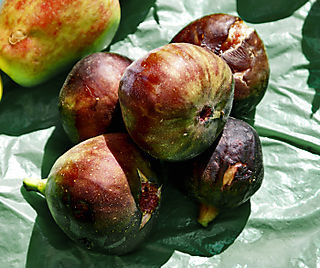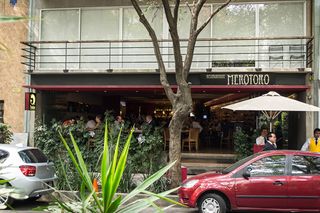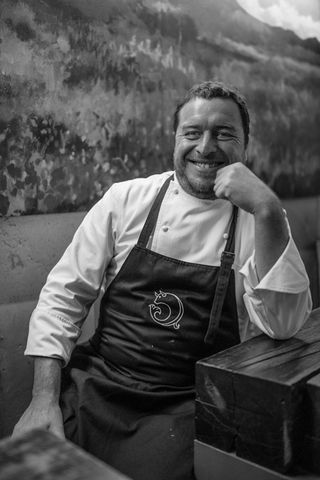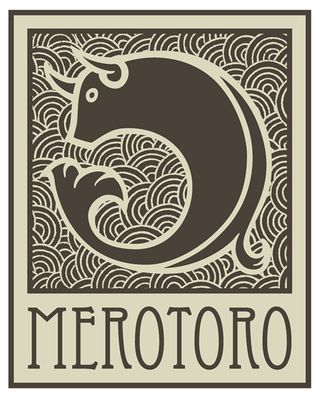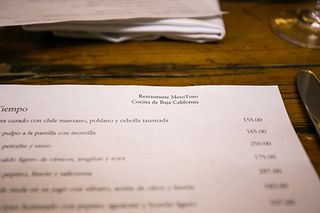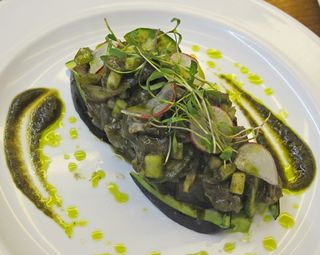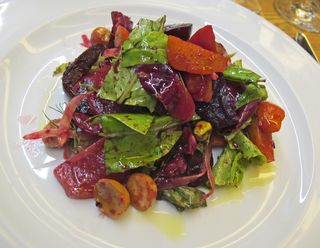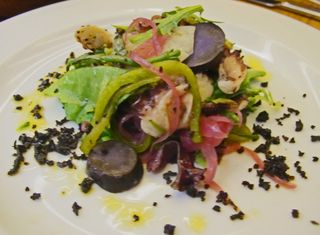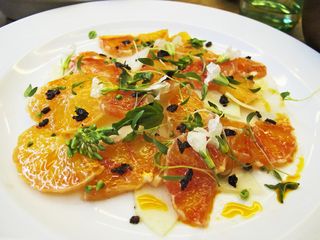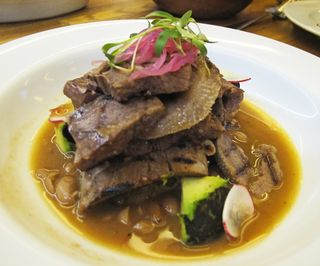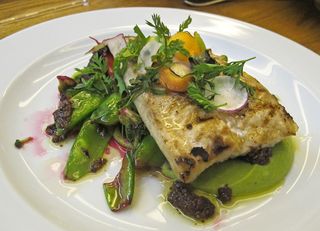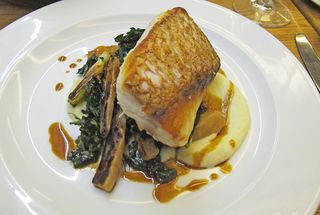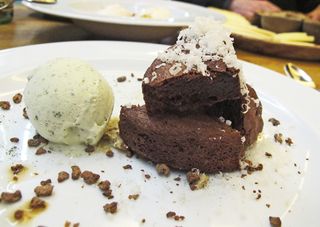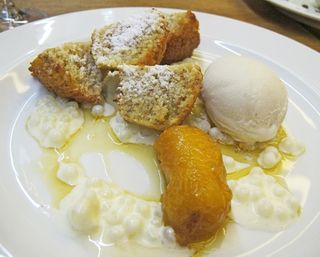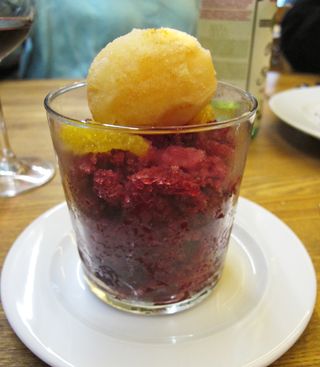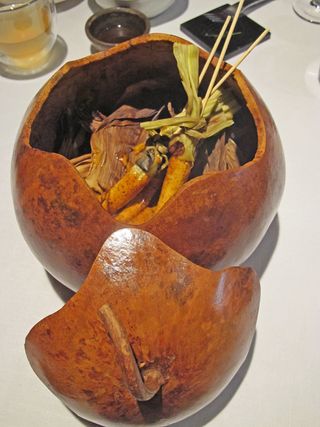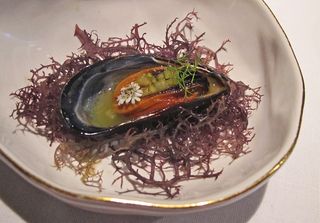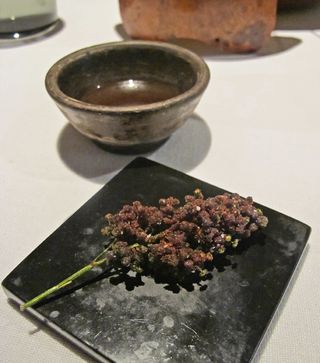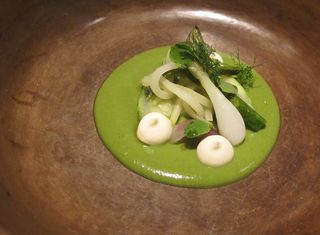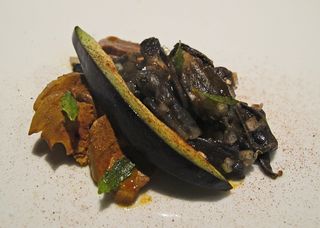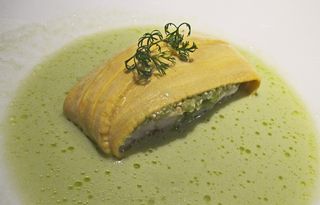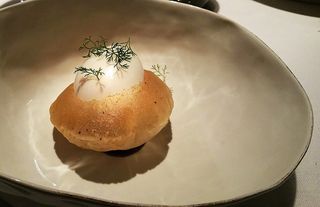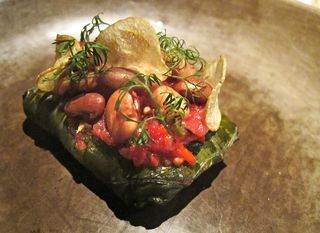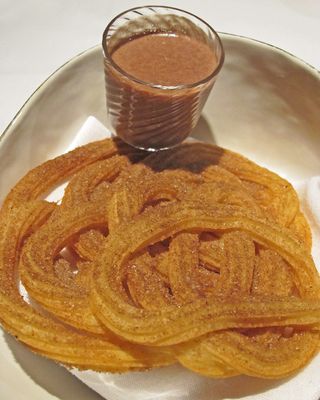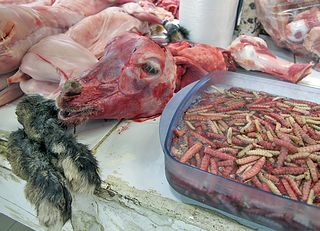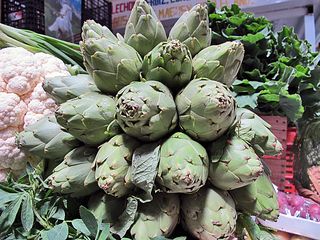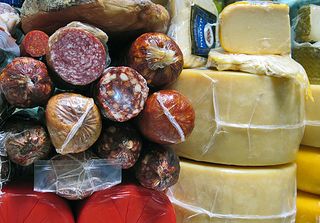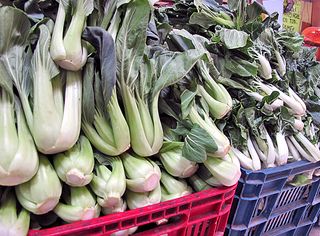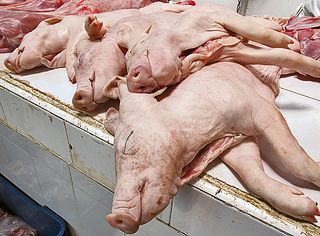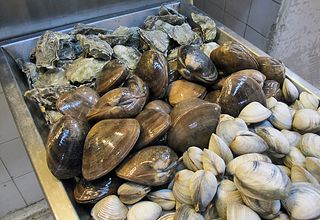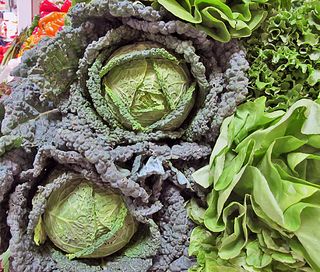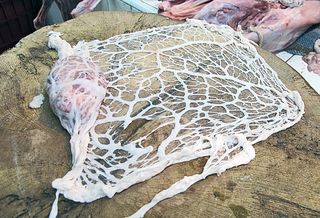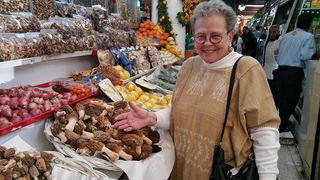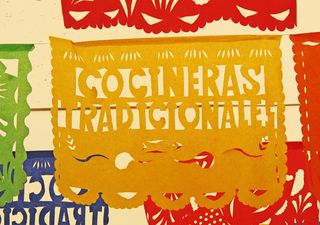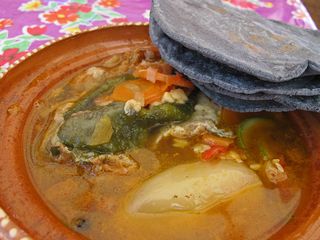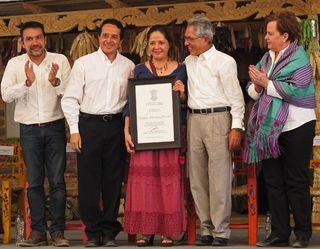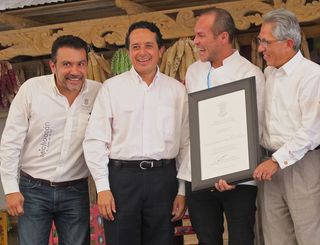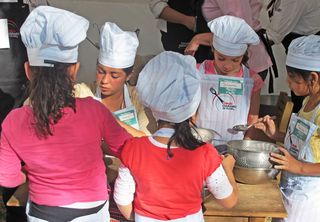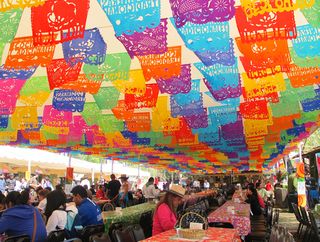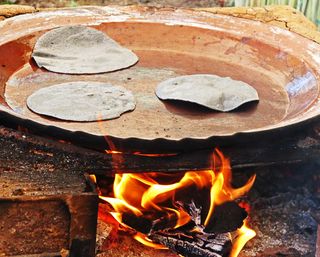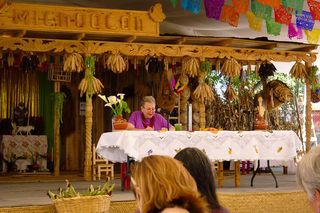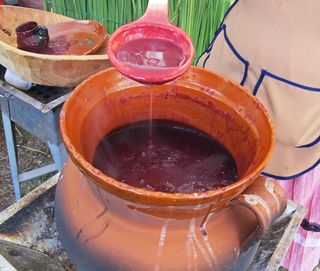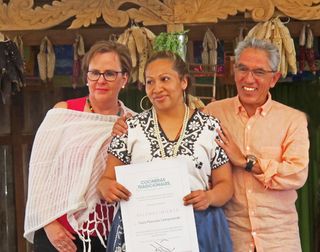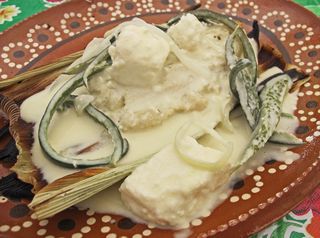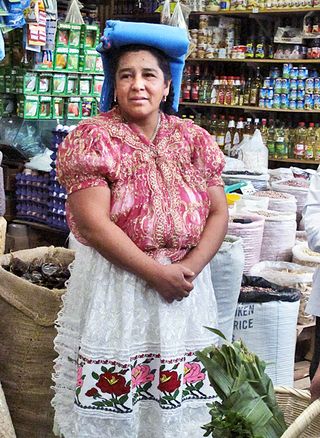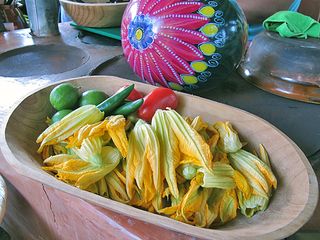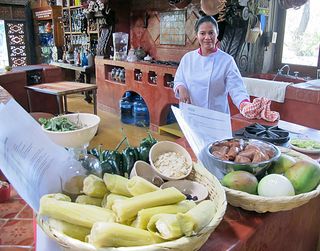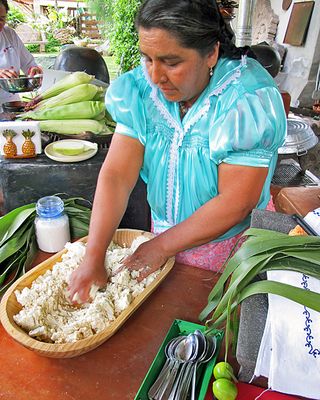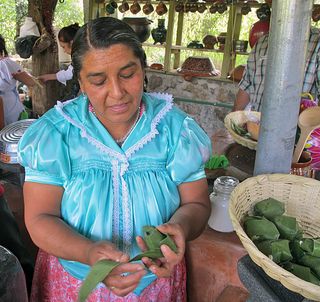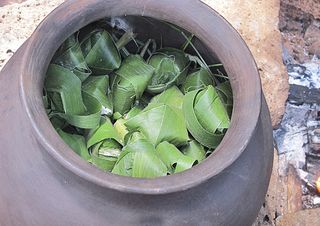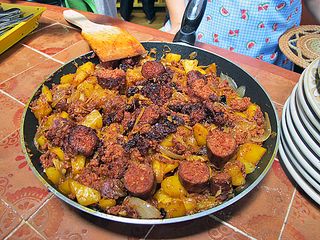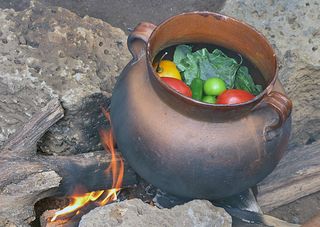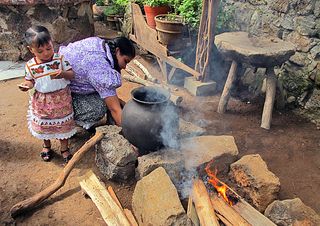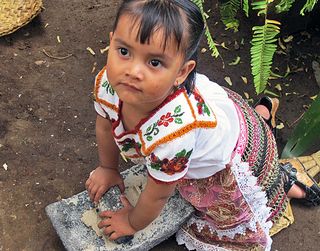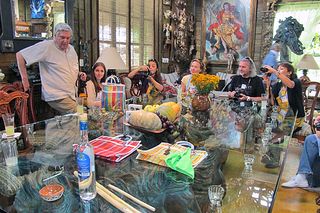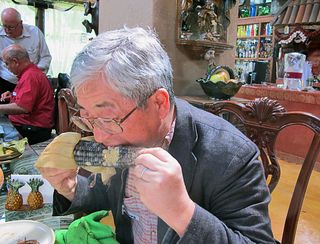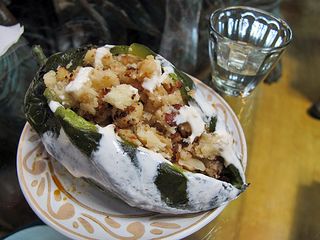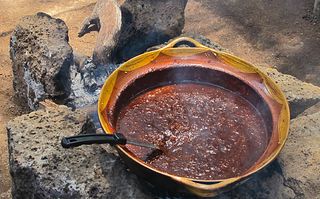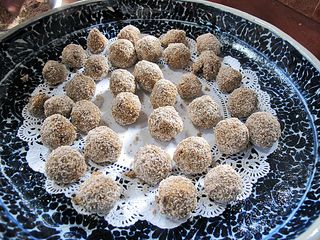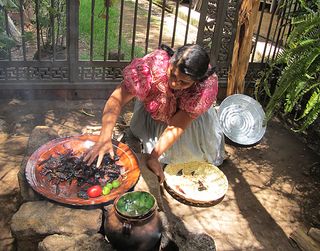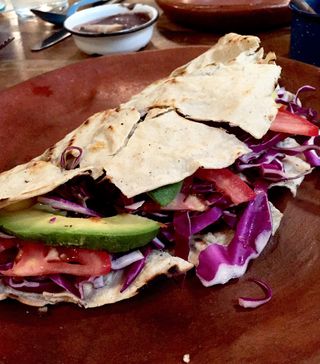
Restaurante Yuban takes the iconic Oaxaca tlayuda and brings it to Mexico City with the addition of fresh, crunchy vegetables. In addition to the visible vegetables, this tlayuda is stuffed with melted Oaxaca cheese, chorizo (spicy pork sausage), and tasajo (marinated grilled beef). We four split it as an appetizer; it was just enough to wake up our appetites for more. All photos by Mexico Cooks! unless otherwise noted. Click on any photo for a larger view.
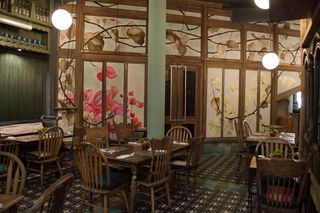
One part of the charming and comfortable dining room at Yuban. The restaurant also has a very popular bar with a large selection of mezcales. Photo courtesy Gastronoma.
The state and city of Oaxaca are deservedly famous for their cuisine, and the Zapotec communities outside the city of Oaxaca are celebrated for their regional dishes. Every household has its jealously guarded recipes; every grandmother has her personal way of preparing ancestral dishes. Restaurante Yuban, which opened its doors in October 2013, continues to be one of the few restaurants in the city where Zapotec food is prepared–and prepared deliciously.
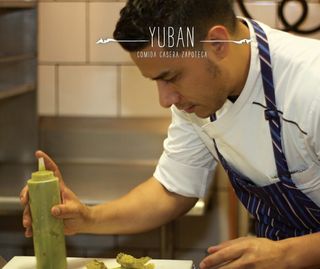
Fernando Martínez Zavala has been the executive chef at Yuban since mid-2014. A native of Uruapan, Michoacán, chef Fernando is self-taught and has 14 years' experience, most notably as chef in the Mexico City restaurants Les Moustaches and Moustache Bistrot. He comes from a family of cooks. Just prior to starting his work at Yuban, Fernando won Mexico's well-respected Cocinero del Año 2014 (Cook of the Year) competition. Photo courtesy Yuban.
Two lovely friends, visiting recently from Los Angeles, invited Mexico Cooks! to join them for comida (the midday main meal of the day in Mexico) at Restaurante Yuban, where we had not been since chef Fernando took the helm. Yuban (the Zapotec name means living earth) was a favorite of ours when it opened, but it had obviously been quite a while since we'd enjoyed both the charming room and the delicious menu.

Lengua en salsa verde (tongue in green sauce) was deliciously tangy, sweet, slightly salty, and served with a mix of organic vegetables from Oaxaca. One of Mexico Cooks!' companions at table chose the tongue but allowed me to taste it.

Two of the four of us ordered this cooked-over-low-temperature lechón en pipián de pepita (suckling pig in pumpkin seed sauce) with nopales (diced cactus paddles), pea shoots and nasturtium flowers. Although the flavors were exquisite, the meat was extremely fatty and the sauce quite over-salted. With just a bit more attention to the details, this dish will have the potential for greatness.
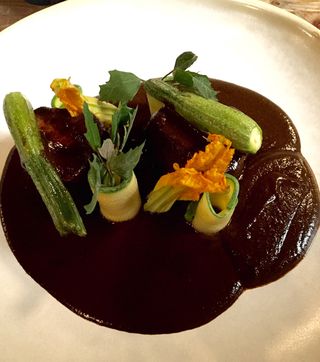
My choice for comida was mole negro con guajolote (black mole with turkey). I loved the vegetable garnish: tender flor de calabaza (squash flowers) and still-crunchy baby calabacitas (similar to zucchini). The turkey was tender, but once again, the sauce was seriously over-salted.
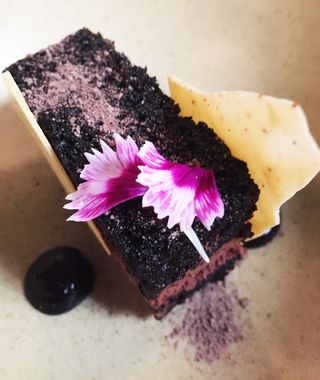
The house very graciously sent two desserts to our table–along with four plates and spoons all around. This pastel de chocolate (in this case, cake made of stone-ground Oaxacan chocolate) is presented with a leaf of white chocolate freckled with ground chile chilhuacle, Oaxaca's iconic and very scarce chile.

Our second dessert was my favorite: Cremoso de requesón (creamy ricotta-type cheese ice cream) with a streusel of pinole (toasted, lightly sweetened and ground dried corn), roasted fresh pineapple, and coconut ice cream. Its textures and flavors surprised me with their depth and fresh combination. I hoped that my table companions might let me finish it by myself, but we all loved it too much to do anything but share it to the last crumb.
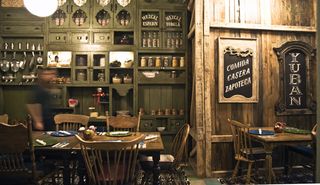
Another view of Yuban's inviting dining space. Photo courtesy DondeIr.
Mexico Cooks! was grateful to have time for a talk with chef Fernando about the opportunities for improvement in his dishes. I'm sure that by the time you read this, the very few kinks we noticed will have been straightened out and that you will love Yuban when you dine there. I certainly plan on returning–maybe we will see one another there.
Restaurante Yuban
Colima 268 near the corner of Insurgentes
Col. Roma Norte
Tel: 55-6387-0358
Hours: Monday – Wednesday 1:30PM – 11:00PM
Thursday – Saturday 1:30PM – Midnight
Sunday 1:30PM – 6:00PM
Reservations recommended
Looking for a tailored-to-your-interests specialized tour in Mexico? Click here: Tours.
